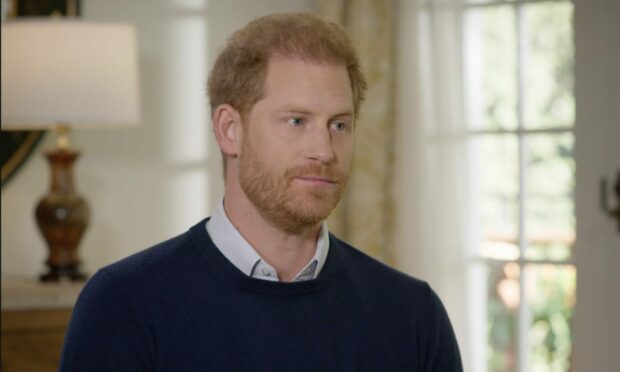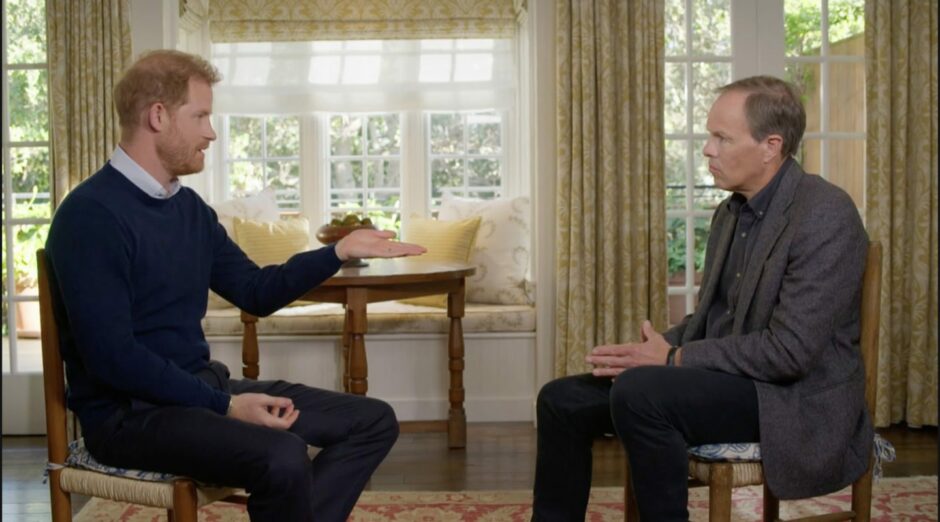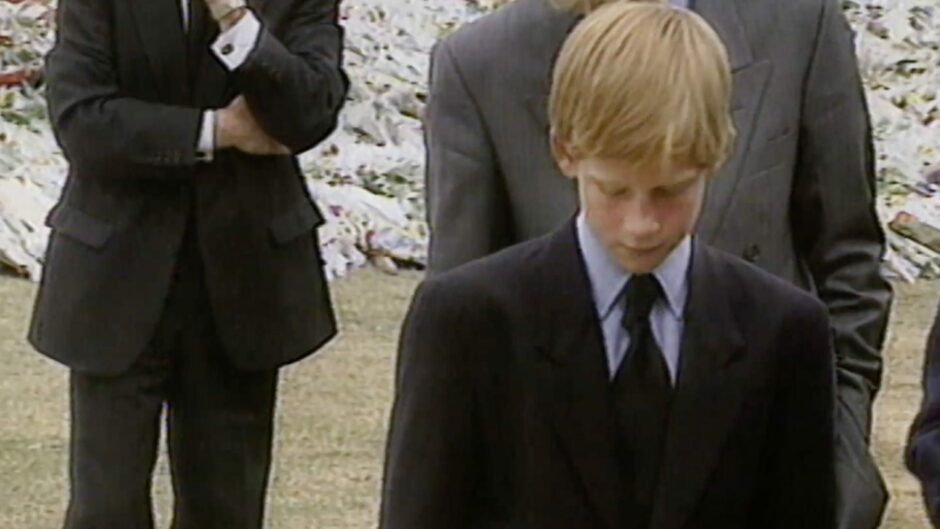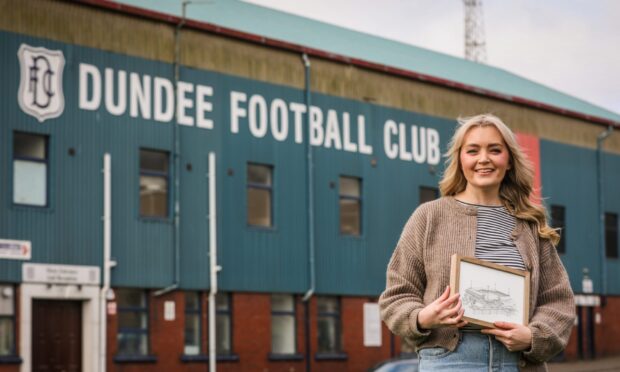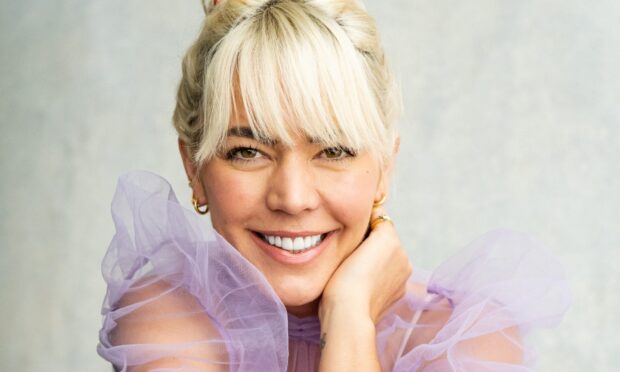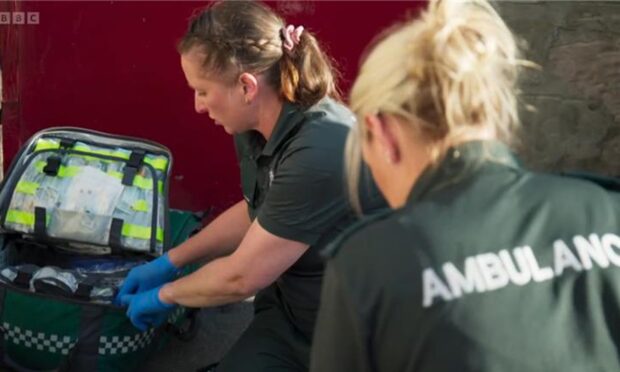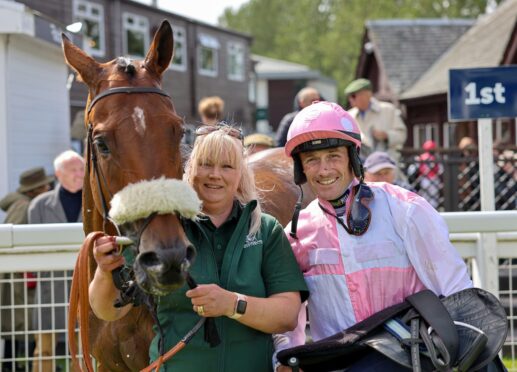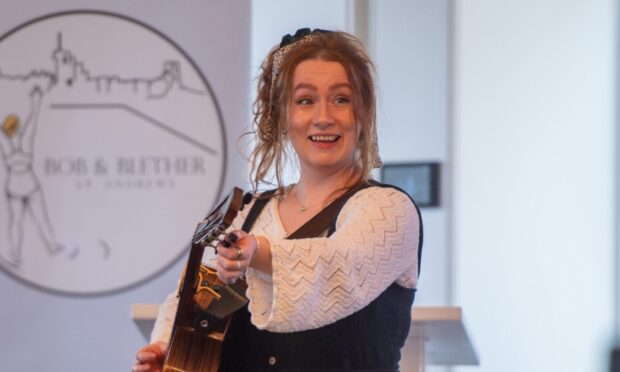The more the Harry and Meghan saga has become unavoidable over the winter, the more it’s seemed everyone has to have an opinion on it.
You don’t have to look far – on the internet or in real life – to find someone who thinks the couple are on a righteous quest to either reform or bring down the British Monarchy.
You’re never far from someone convinced they’re fame-hungry, ungrateful or just plain annoying, either.
No shades of grey
Dig into it, though, and it’s a story of competing contradictions which deserves more thought than the usual online culture war, where no shades of grey are permitted.
Last Sunday’s Harry: The Interview (STV), then, represented the first real chance the public had to look in The Artist Formerly Known As Prince’s eyes and see him under cross-examination about his autobiography, Spare.
Sitting opposite was journalist Tom Bradby, a friend for 20 years, which didn’t bode well for a tough questioning; it would have been great to see Emily Maitlis instead, after her last Royal grilling.
Thank goodness Bradby glossed over the excerpt about Harry’s virginity loss from the book, which is surely a shoo-in for the Bad Sex Award. Also largely missing were the frank tales of drug-taking and his controversial killing of Taliban fighters.
What was left was an extended pry into his relationship with his family.
Harry and the family
His father King Charles seems loved but distant; his stepmother Camilla, he’s much cooler toward.
The relationship with his brother William is deeply complicated, to say the least, although getting into complaints over whether he wanted Harry to have a beard when he got married seems trivial.
In Harry’s life, these are matters of grave importance. Yet the interview was well-scheduled for Sunday evening on the ITV network, because it felt about as impactful as a moderately watchable new drama or reality telly show.
We mainly learned that families argue, sometimes to a painfully bitter extent – no big shock, but intriguing to hear a member of this family get into it.
Harry’s privilege and, yes, a sense of moaning hypocrisy are palpable, and it’s hard to see what kind of family re-bonding might be possible after this score-settling.
This is where the contradiction arrives, though. He still seems deeply affected by his mother Princess Diana’s death and having to deal with it in front of the cameras aged 12, and discussion of this was one of the most effective and emotional segments of the interview.
His real enemy
Another was the emerging theme that his real enemy is sections of the media, going right back to that crash in a Paris tunnel, and his family’s relationship with them.
He’s clearly determined to protect his wife and children from what he experienced, which is a commendable goal.
The family’s motto, he says, is “never complain, never explain,” a playbook this chat ripped up, but we still need to pinch ourselves and remember the Royal Family are Other People.
None of us know them, and this frank peek behind the curtain answered few questions, other than the one about whether you’d want to do their job: the answer is still no.
You get the defining historical moments you’re given, and this was the moment the second Elizabethan era definitively ended.
To think Shakespeare used to write plays about these people.
